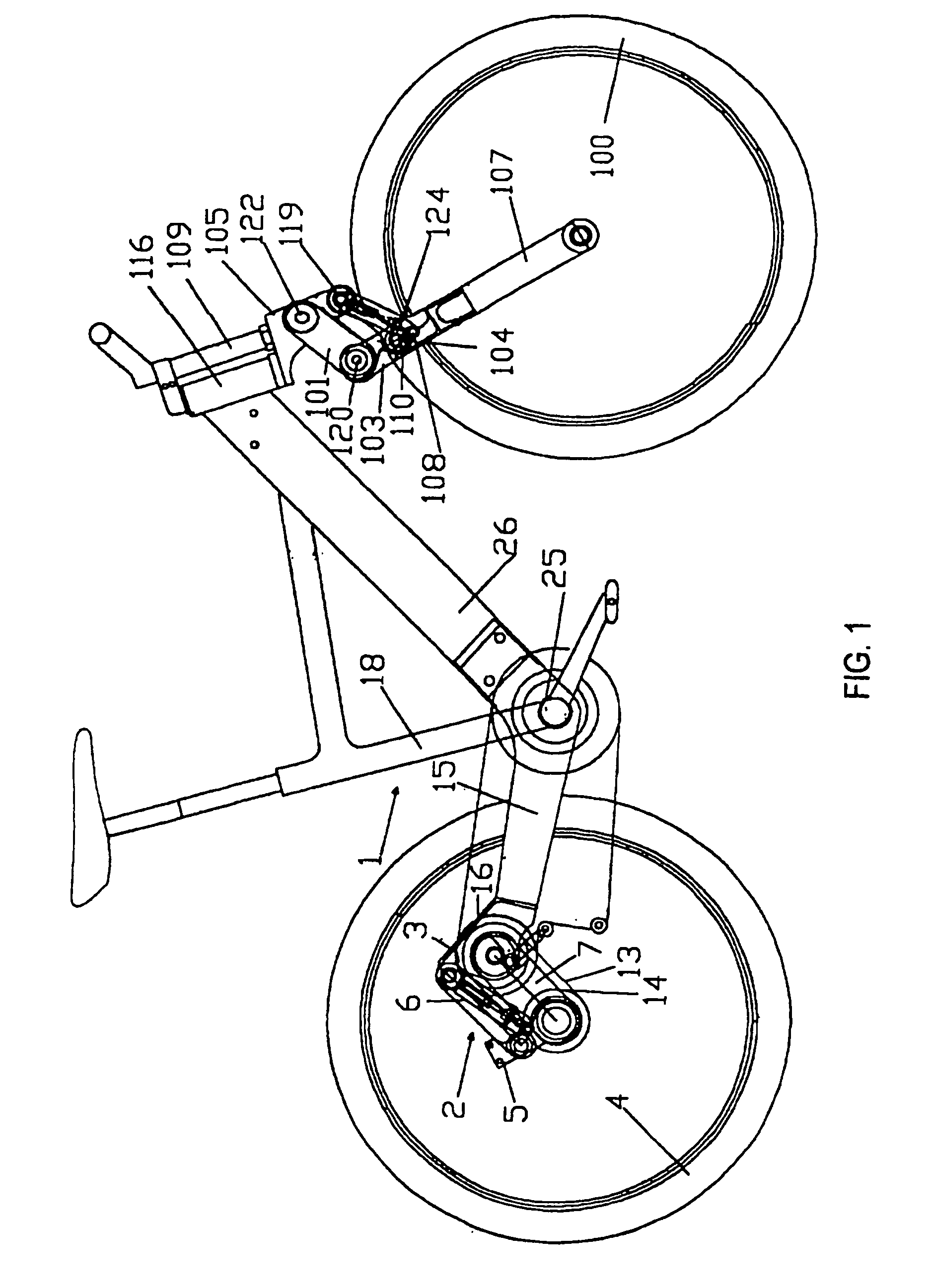All-suspension bicycle frame with isolated drive gear
a drive gear and bicycle frame technology, applied in the direction of bicycles, unicycles, motorcycles, etc., can solve the problems of reducing suspension, affecting the stability of the bicycle frame, so as to reduce the displacement of the bicycle and reduce the suspension. , the effect of reducing friction, reducing vibration and reducing the movement of the bicycl
- Summary
- Abstract
- Description
- Claims
- Application Information
AI Technical Summary
Benefits of technology
Problems solved by technology
Method used
Image
Examples
Embodiment Construction
[0040]FIGS. 1–3 show a preferred embodiment of one aspect of the invention. A rear frame construction 2 includes a lower wheelholder 5 for rear wheel 4, rear fastening part 3 attached to a main frame 1, one movable midsection formed of bars 6, 7, between wheel holder 5 and fastening part 3, and the frame itself 1 for supporting the remaining parts which together comprise a bicycle (i.e., a two-wheeled vehicle). As shown in FIG. 1, the main frame 1 includes chainstays 15, saddle tube 18, crank housing 25, and a lower tube 26 connecting the crank housing 25 to steering tube 116.
[0041]Rear fastening part 3 should be mounted on the chainstays (chain fork) 15 of the main frame 1, and they strengthen the chainstays 15 with mounting details because the rear fastening part 3 has holes for threaded inserts for the fastening of bearing bolts 21, 22 as well as threaded parts for mounting of gears. Fastening part 3 forms a rigid extension of chainstays 15.
[0042]The bicycle's rear wheel 4 is mou...
PUM
 Login to View More
Login to View More Abstract
Description
Claims
Application Information
 Login to View More
Login to View More - R&D
- Intellectual Property
- Life Sciences
- Materials
- Tech Scout
- Unparalleled Data Quality
- Higher Quality Content
- 60% Fewer Hallucinations
Browse by: Latest US Patents, China's latest patents, Technical Efficacy Thesaurus, Application Domain, Technology Topic, Popular Technical Reports.
© 2025 PatSnap. All rights reserved.Legal|Privacy policy|Modern Slavery Act Transparency Statement|Sitemap|About US| Contact US: help@patsnap.com



